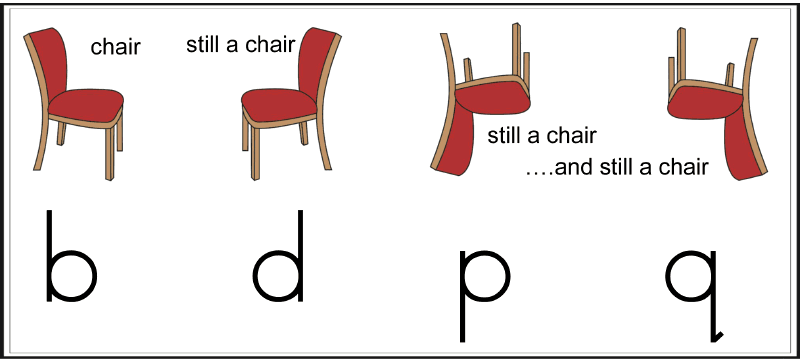Module 7 Definitions
Spelling Inventory (n.) - a means of student assessment used to help group students by spelling developmental stage; contain lists of words chosen to represent a variety of spelling features at increasing levels of difficulty. These features might include consonants, digraphs, blends, short vowels, and so forth.
This is an excellent tool in monitoring student growth. In order for students to be challenged and pushed to grow and improve, they must be assessed periodically to ensure they are not completing work too far below or above their skill and knowledge level.
Static Reversal (n.) - a difficulty in differentiating letters which are horizontally or vertically symmetrical to each other or rotated (i.e. p and q; b and d; p and d).

Kinetic Reversal (n.) - a tendency to confuse palindromes (i.e. was and saw; not and ton) and to occasionally read from right to left resulting in a reverse of paired letters, or even syllables within a word.

Understanding reversals is important because they can be indicative of separate issues. Children who are dyslexic often struggle with reversals. It may also be an issue with visual processing or visual discrimination. Children who are challenged with reversals may not notice or be able to compare features of unique symbols or objects (i.e. letters, numbers, or words) and may need additional help and resources to be able to succeed.
This is an excellent tool in monitoring student growth. In order for students to be challenged and pushed to grow and improve, they must be assessed periodically to ensure they are not completing work too far below or above their skill and knowledge level.
Static Reversal (n.) - a difficulty in differentiating letters which are horizontally or vertically symmetrical to each other or rotated (i.e. p and q; b and d; p and d).

Kinetic Reversal (n.) - a tendency to confuse palindromes (i.e. was and saw; not and ton) and to occasionally read from right to left resulting in a reverse of paired letters, or even syllables within a word.

Understanding reversals is important because they can be indicative of separate issues. Children who are dyslexic often struggle with reversals. It may also be an issue with visual processing or visual discrimination. Children who are challenged with reversals may not notice or be able to compare features of unique symbols or objects (i.e. letters, numbers, or words) and may need additional help and resources to be able to succeed.
References
https://mypearsontraining.com/assets/files/documents/TG_WTW_Assessment.pdf

Comments
Post a Comment